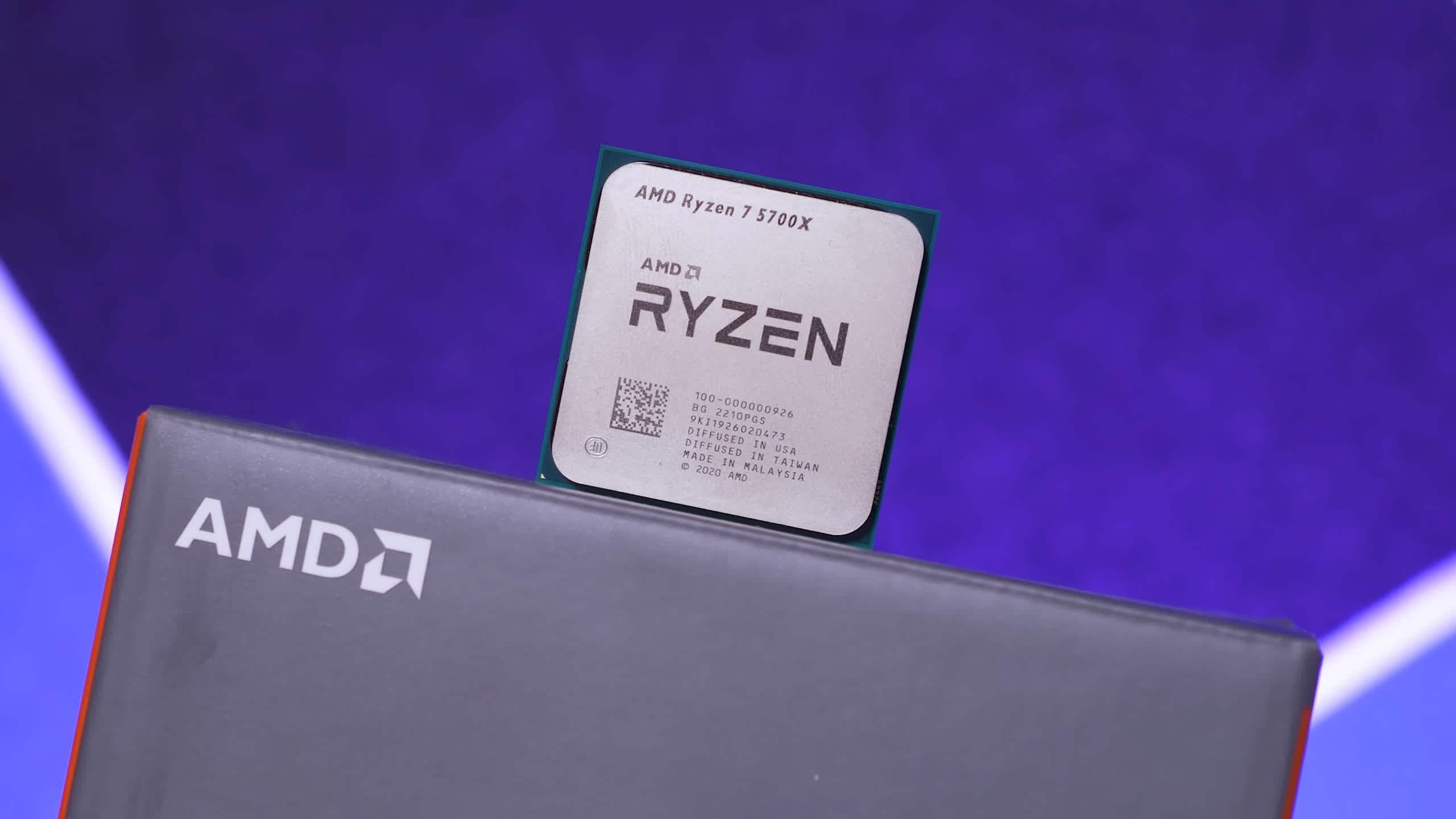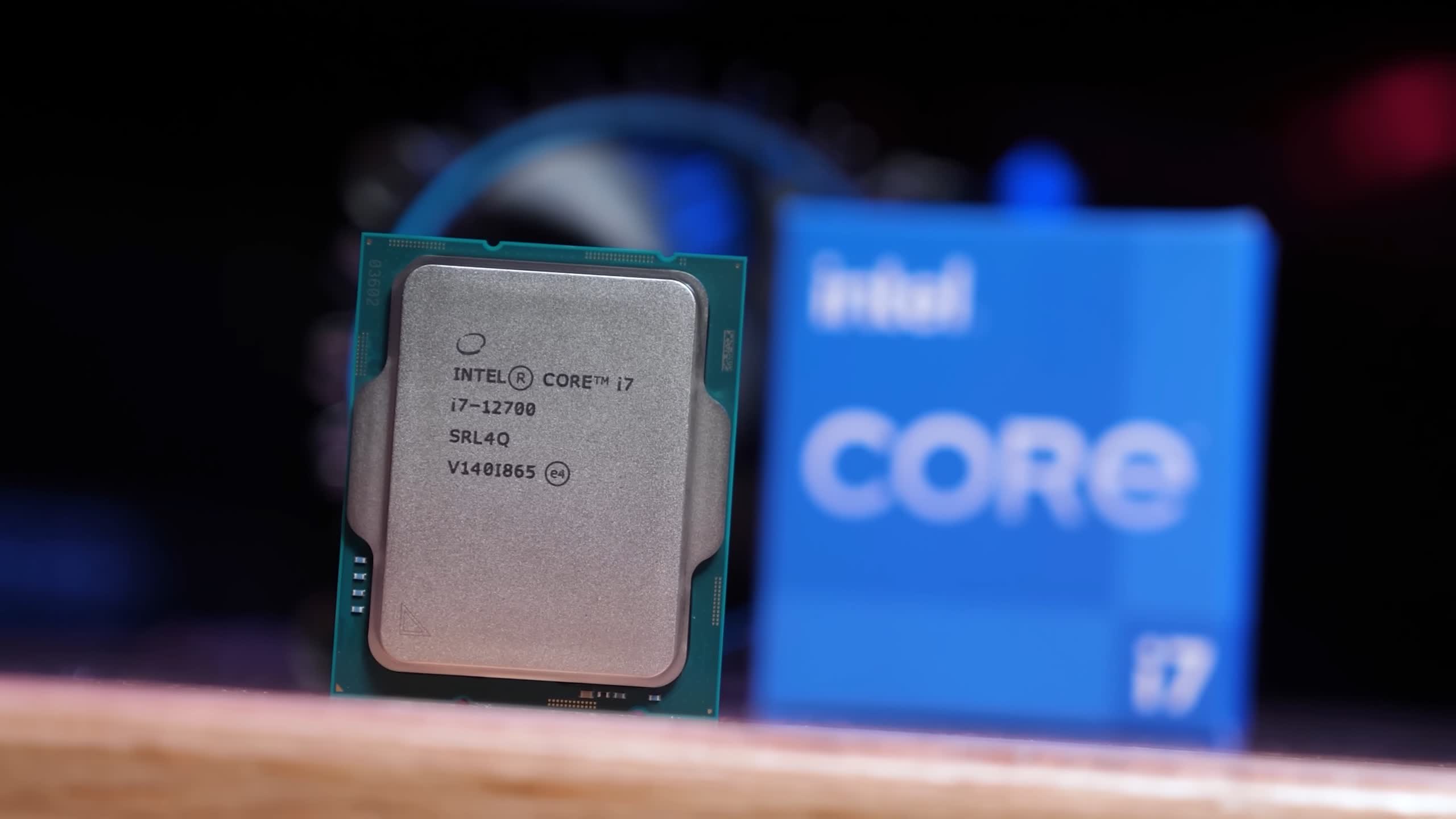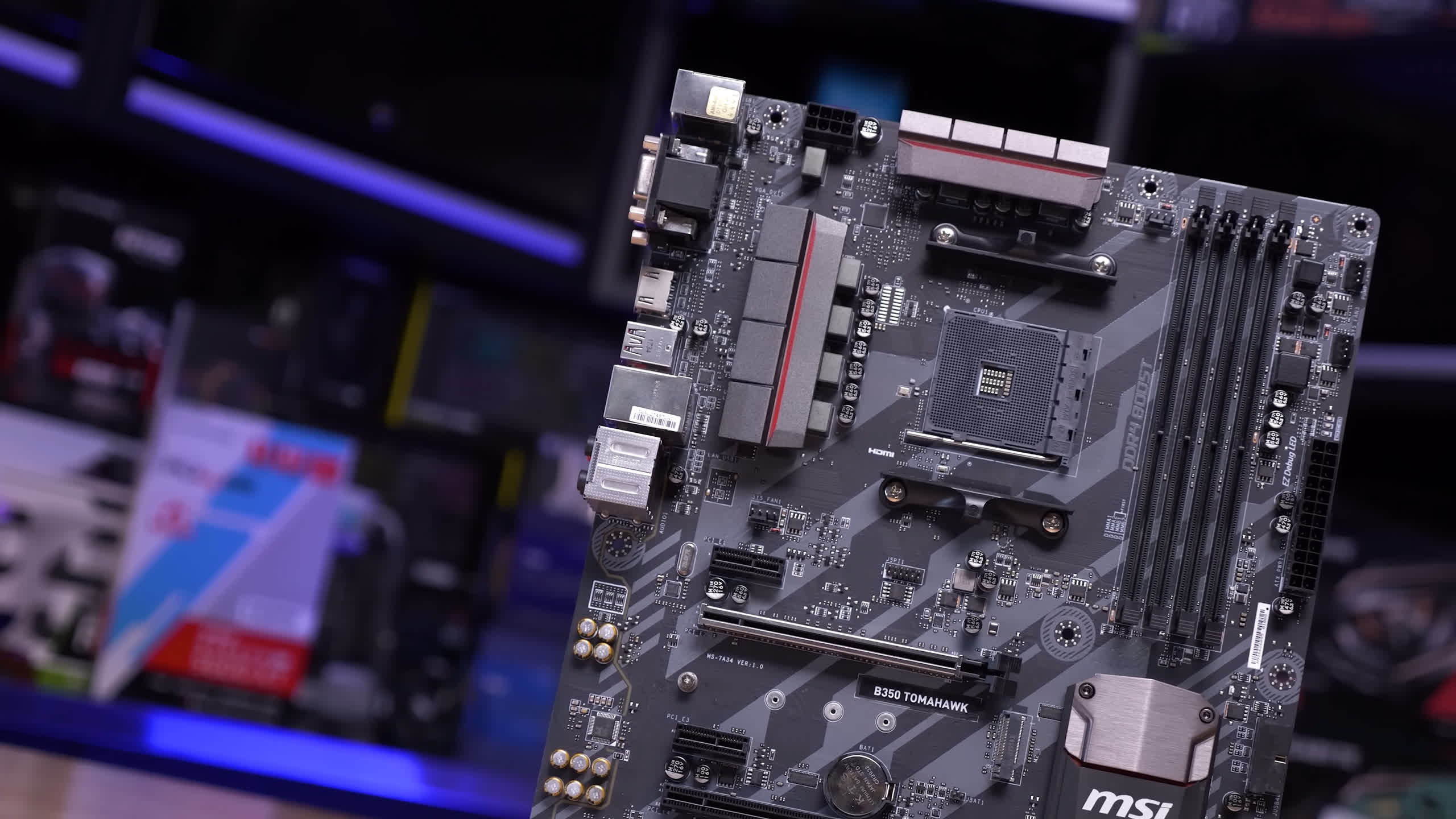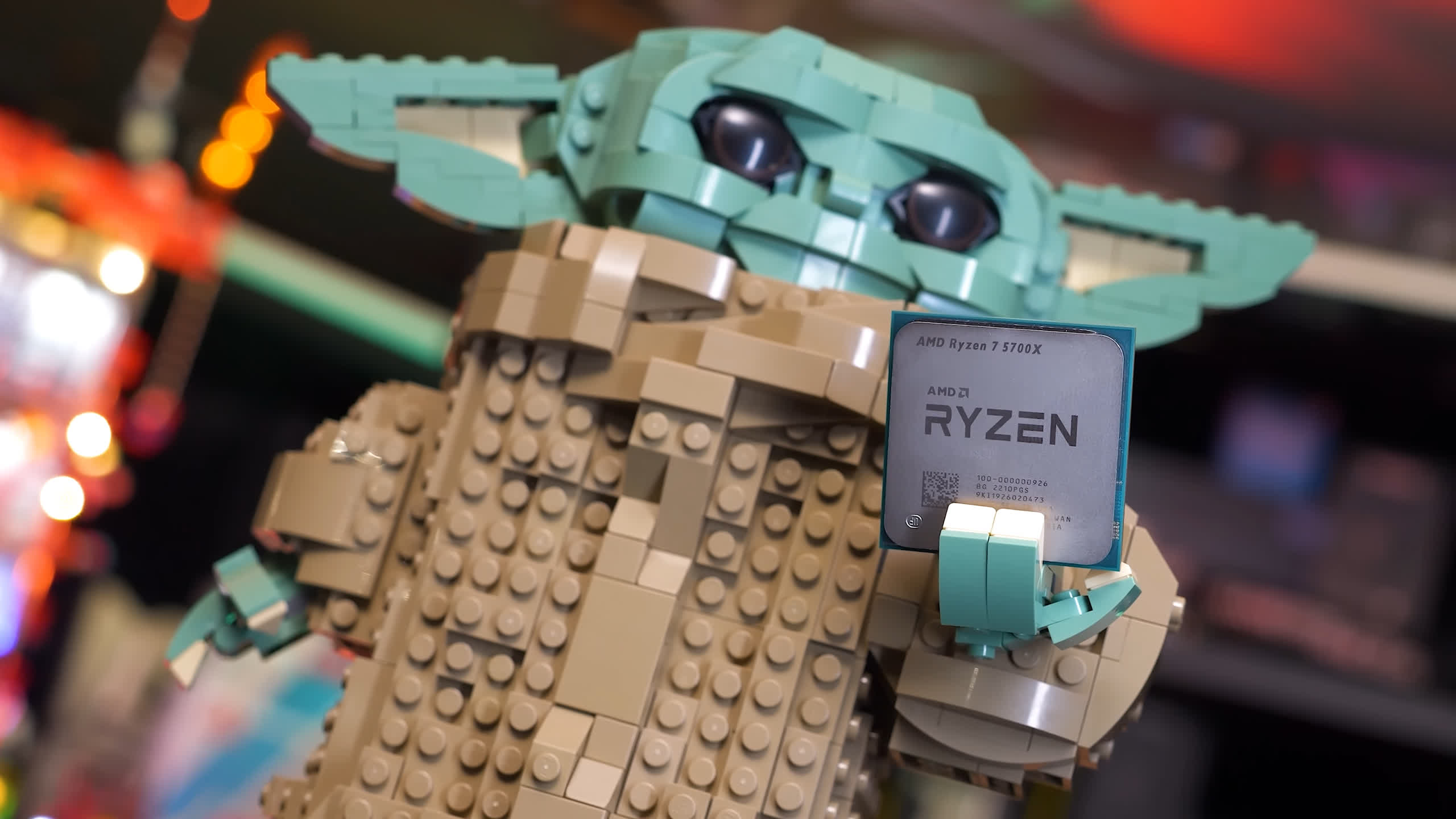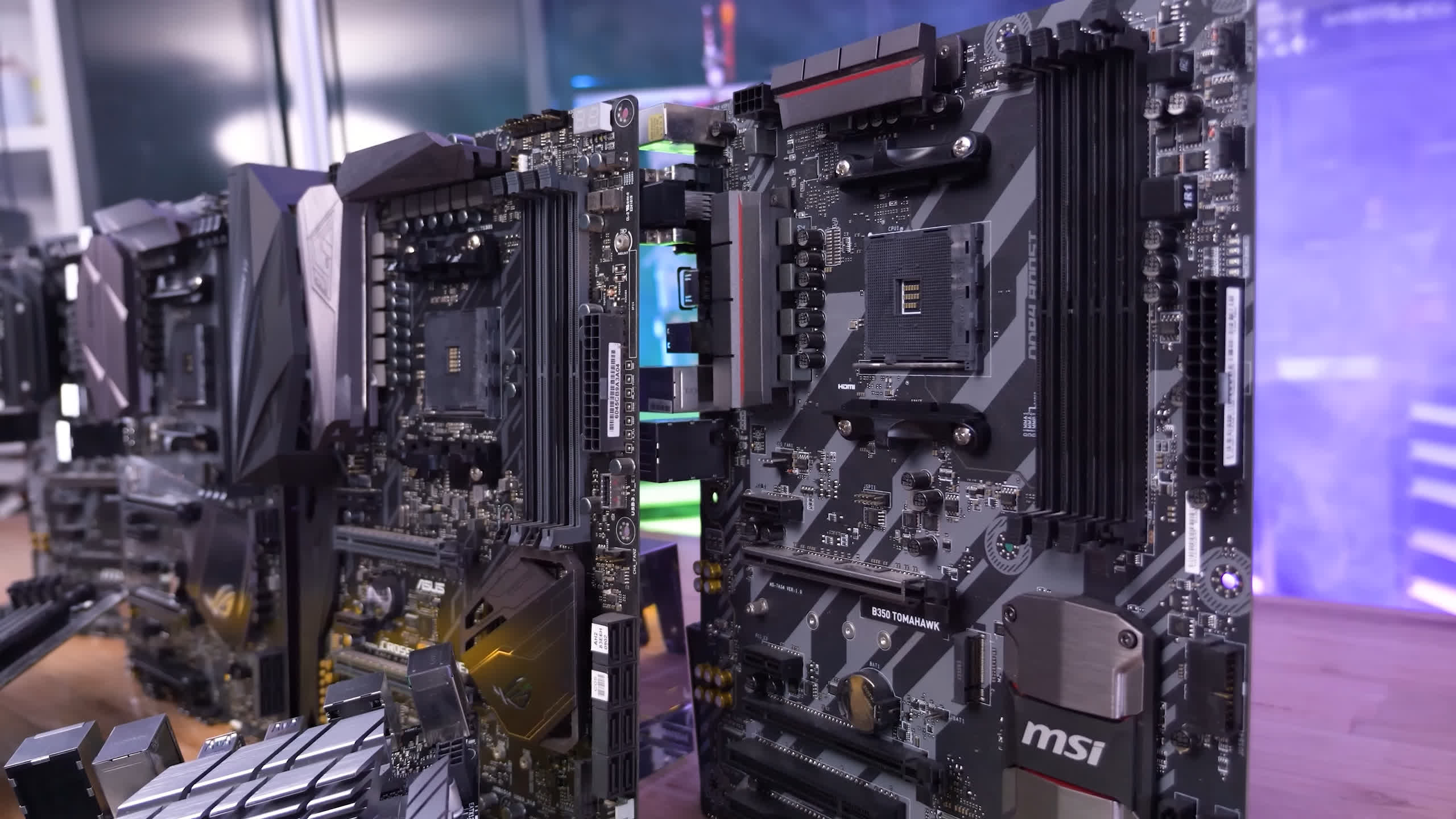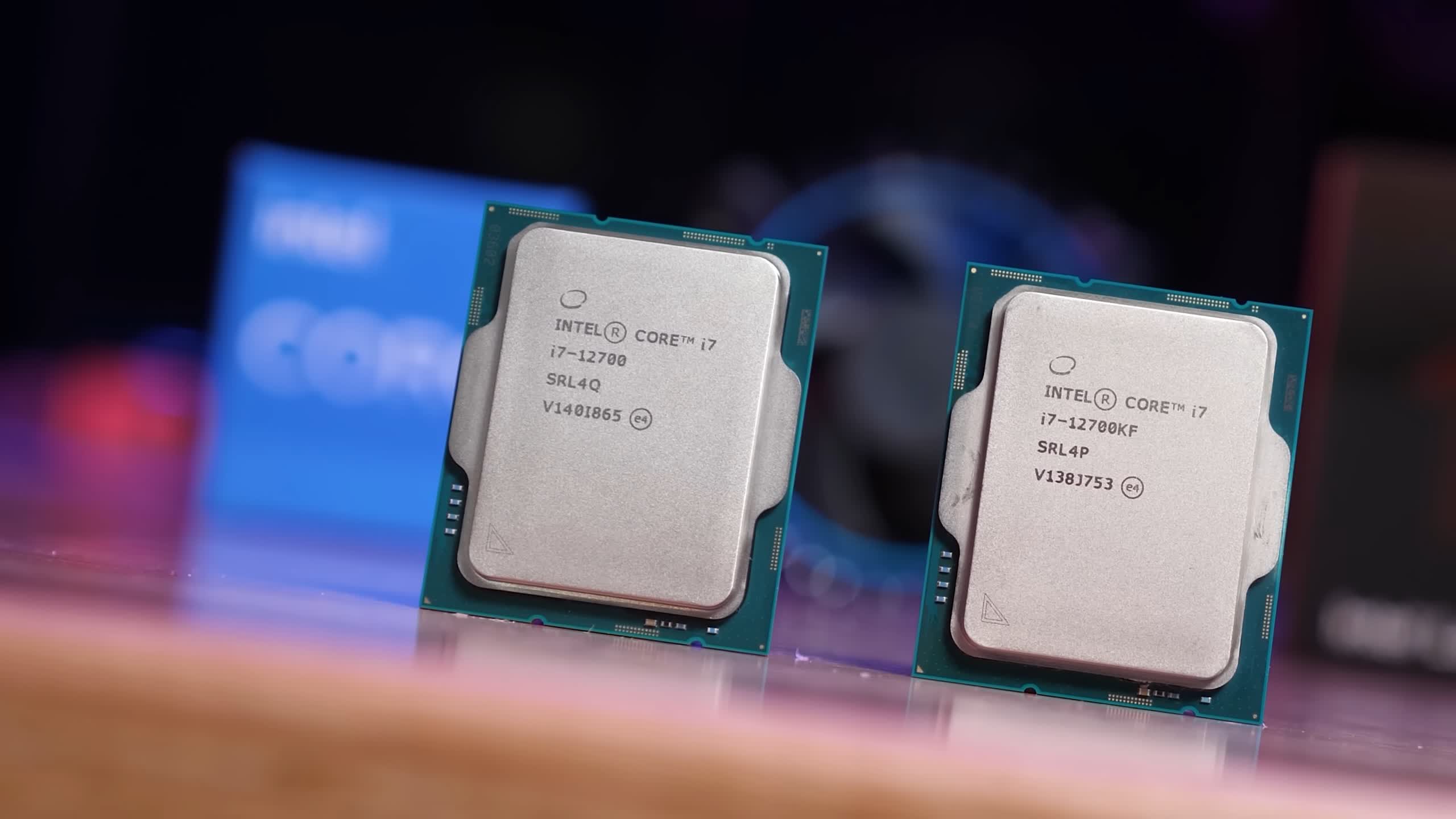It's time to compare the Ryzen 7 5700X against the Core i7-12700F, two relatively affordable and powerful 8-core CPUs. Now, we know the Intel processor costs a little bit more, and we're sure some will argue that the Core i5-12600KF is possibly a "fairer" matchup, but this was heavily requested so let's see what's what between these two for now.
As of writing, Intel's 12700F can be had for $310, whereas the 5700X is slightly cheaper at $285, or about a 9% premium for the Intel CPU. In other regions like Australia, the 5700X typically retails for $425 and the 12700F $480 (AUD), which is slightly steeper for the Intel part, but your mileage will undoubtedly vary.
It's probably worth noting that in Australia the 5700X is about 10% more expensive than the 12600KF and a little over 20% more expensive than the base model 12600, so any way you go, it's not going to be entirely apples to apples in terms of pricing. But what we're most interested to see is how the 5700X and 12700F stack up in gaming, so let's get on with it.
For this one we've got a 23 game benchmark covering 1080p and 1440p resolutions using both the Radeon RX 6950 XT and Radeon RX 6600 XT with SAM enabled.
The motherboard used for testing the Ryzen 7 5700X is the old MSI B350 Tomahawk using the latest BIOS revision based on the AGESA 1.2.0.7 microcode, which enables Resizable BAR along with support for Ryzen 5000 processors. It should be noted that as shown before, performance is within a few percent of what we see with the latest and greatest X570 boards, making upgrades very practical.
We've stuck with the B350 Tomahawk for a few reasons. Firstly, we already had the data and know it's comparable with what we'd find using newer and more expensive X570 boards. It also paints a rather new picture for the AMD processor, given that it not only works on a 5-year-old motherboard, but it competes very well when doing so.
Meanwhile, for the 12700F, we require a brand new motherboard and for testing we're using the $260 MSI Z690 Tomahawk DDR4, which we'll discuss more about towards the end of this article. For both systems we've gone with 32GB of DDR4-3200 CL14 dual-rank dual-channel memory.
With those details out of the way, let's go over a few of the games tested and then we'll take a look at the 23 game average.
Benchmarks
Starting with Fortnite, we find that the 12700F and 5700X are very evenly matched and both will offer a first-class experience. The Ryzen CPU was up to 4% faster which is negligible, so the margins are close enough to call this one a tie.
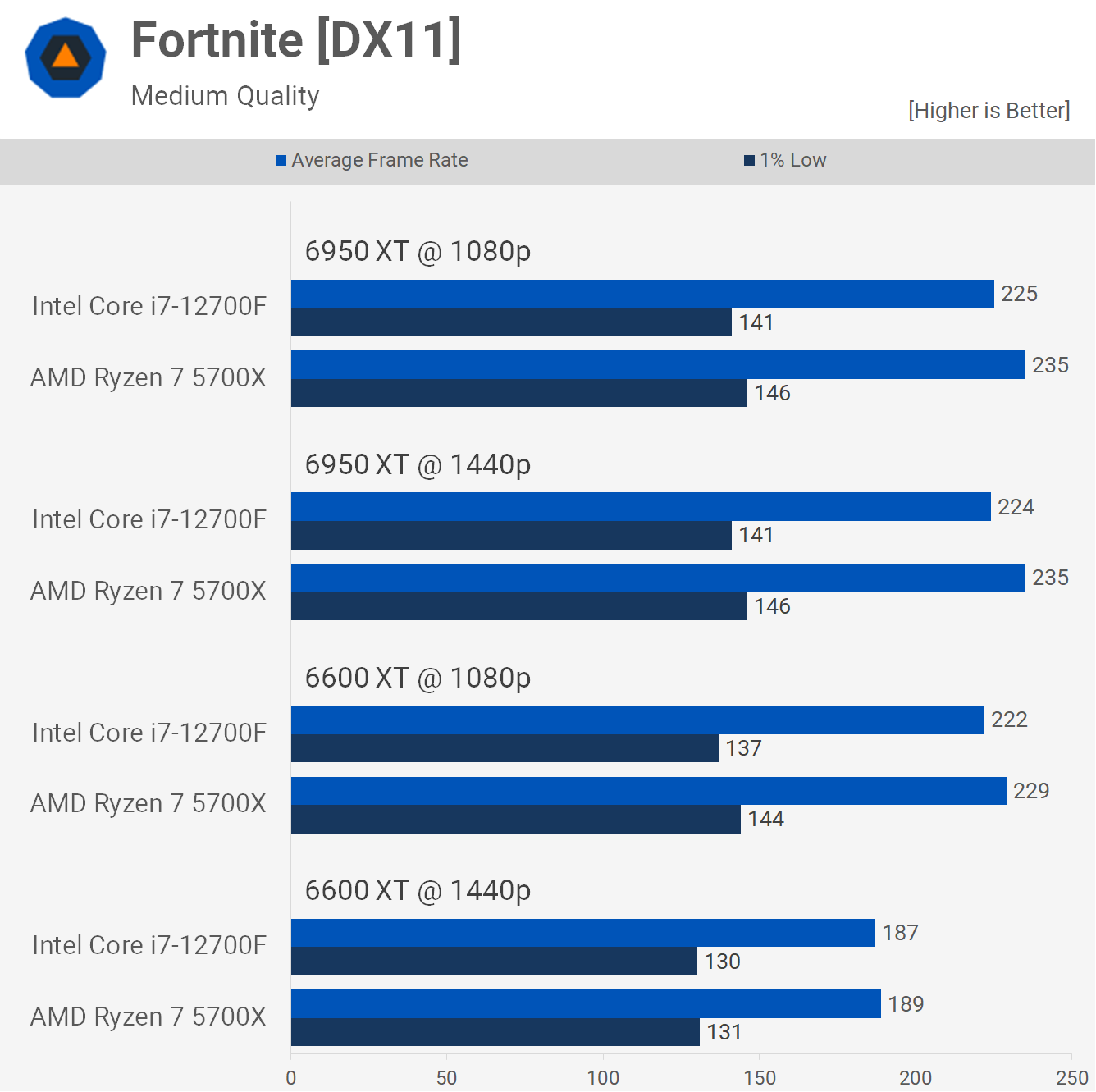

Recently when testing the Ryzen 7 5800X3D we found that the cache-heavy CPU was a beast in ACC, delivering the best performance we've ever seen in this title.
However, standard Zen 3 CPUs aren't nearly as impressive and we see here that the 12700F is up to 40% faster than the 5700X, seen when looking at the 1% lows.
The margin for the average frame rate is about half that figure. Still even using the 6600 XT at 1440p sees the 1% lows improved by 14% with the Intel CPU, so a strong result for the 12700F.

Cyberpunk 2077 plays best with the 12700F when testing more CPU bound scenarios such as 1080p with the Radeon RX 6950 XT, where the Intel part was up to 37% faster. That margin was heavily reduced at 1440p though with the average frame rates basically identical, though the 12700F was 13% faster when looking at the 1% lows. Then when using the 6600 XT performance was a match as we're not heavily GPU bound using either one of these CPUs.
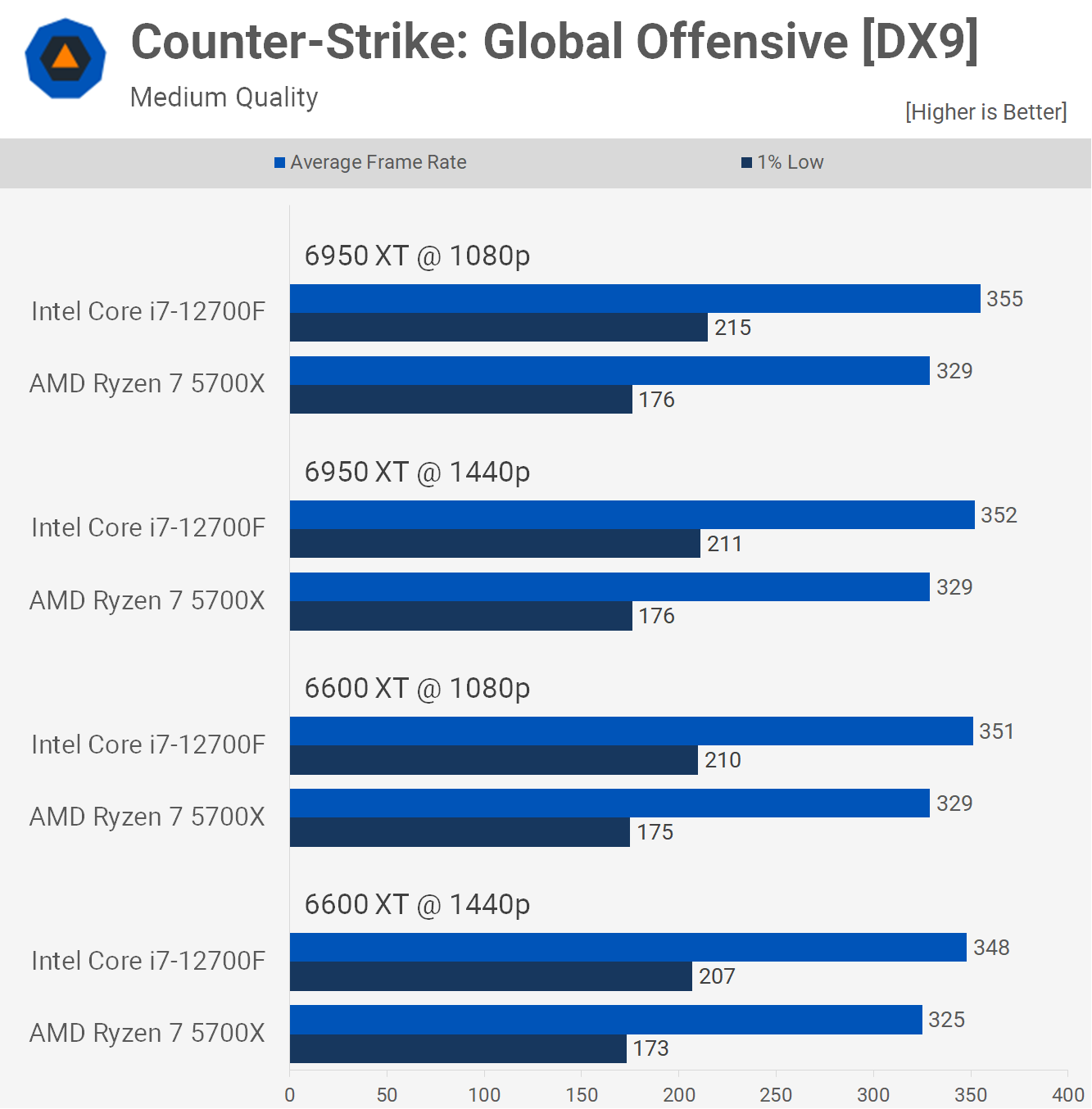
CS: GO is extremely CPU unlimited using either the 6600 XT or 6950 XT, but as an old game it isn't CPU limited more in the sense that it doesn't fully utilize modern CPUs, so it's a software bottleneck more than anything else.
Here the 12700F was up to 22% faster thanks to its stronger single core performance, but both CPUs allowed for 1% lows of over 170 fps with averages well in excess of 300 fps.
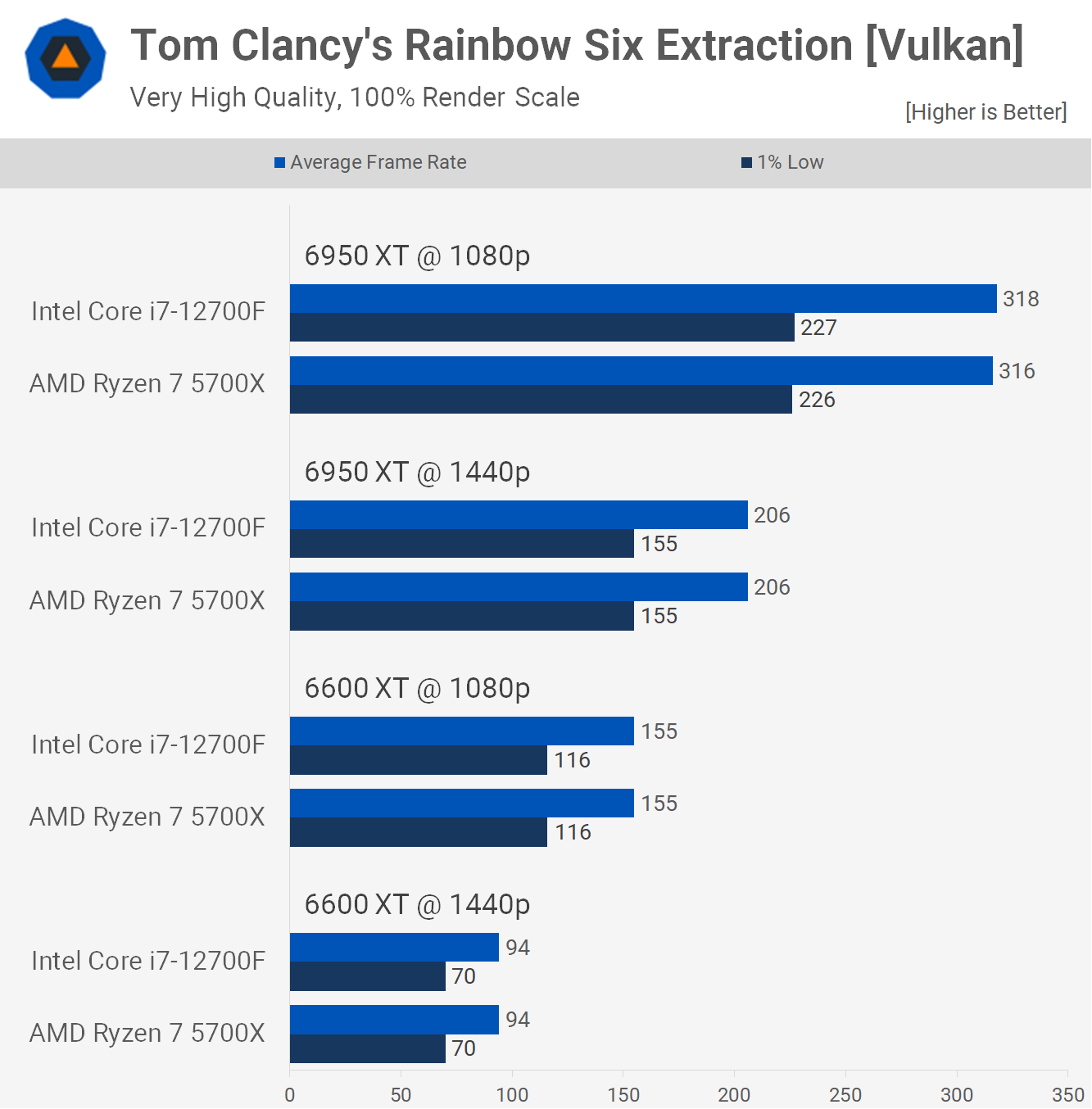
Rainbow Six Extraction is an example of a game that can be played at hundreds of frames per second with modern CPUs, while still being entirely GPU limited using the second highest quality preset.
Both the 5700X and 12700F allowed for over 200 fps at all times in our test, resulting in average frames of over 300 fps. That's plenty fast.

Next we have F1 2021 and this one does start to become CPU bound with the 5700X once we're pushing up around 300 fps. Again, this is more performance than most gamers are going to need for this title. So although the 12700F was up to 16% faster with the 6950 XT at 1080p, it hardly matters with the 5700X keeping frame rates above 200 fps at all times.
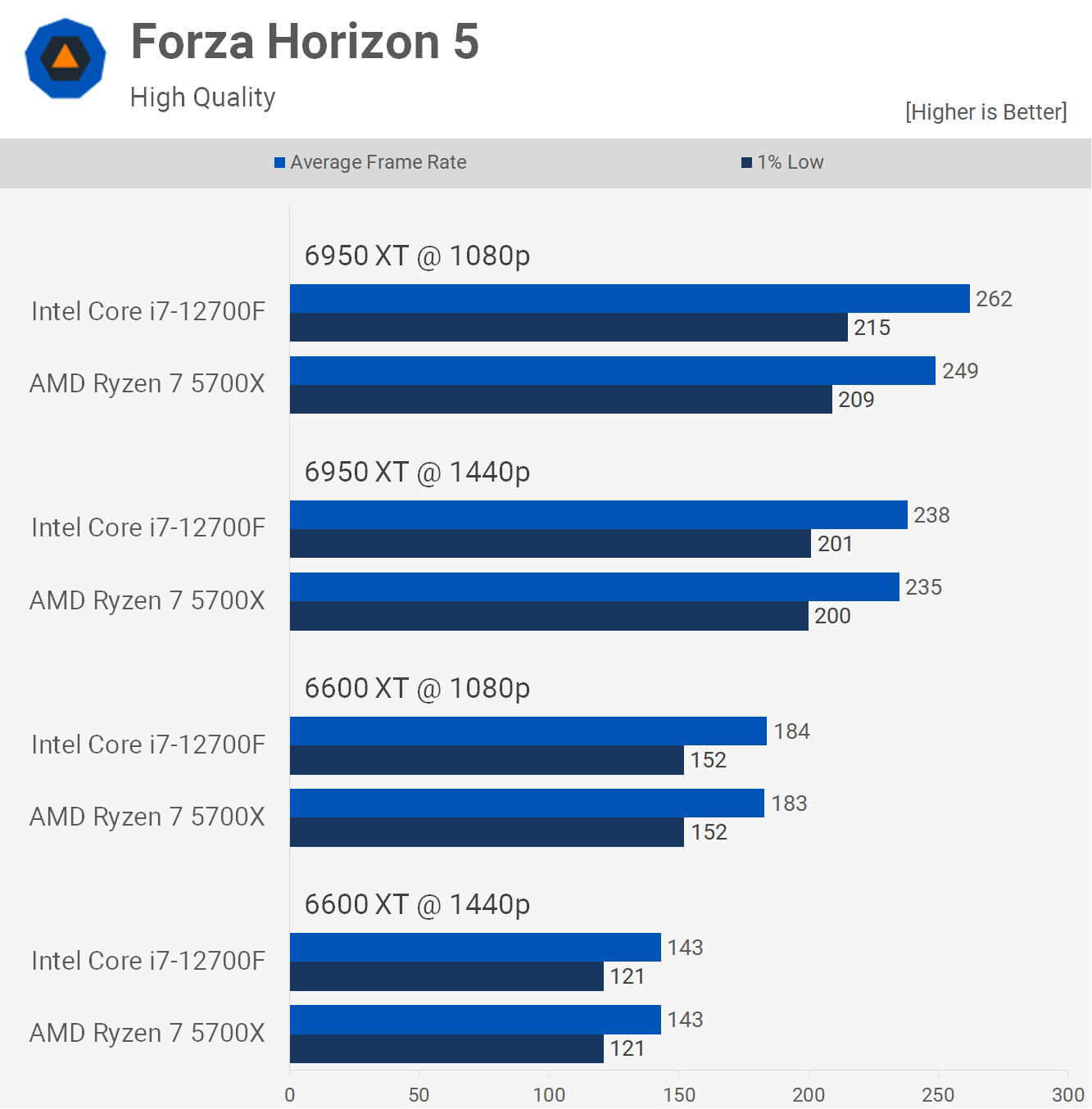
Forza Horizon 5 is a gorgeous and popular racing game that isn't that heavy on the CPU. Both processors can push well over 200 fps when the GPU was capable of it. The 12700F nudged ahead by a 5% margin with the 6950 XT at 1080p, but that's really an insignificant difference that no gamer is going to notice.
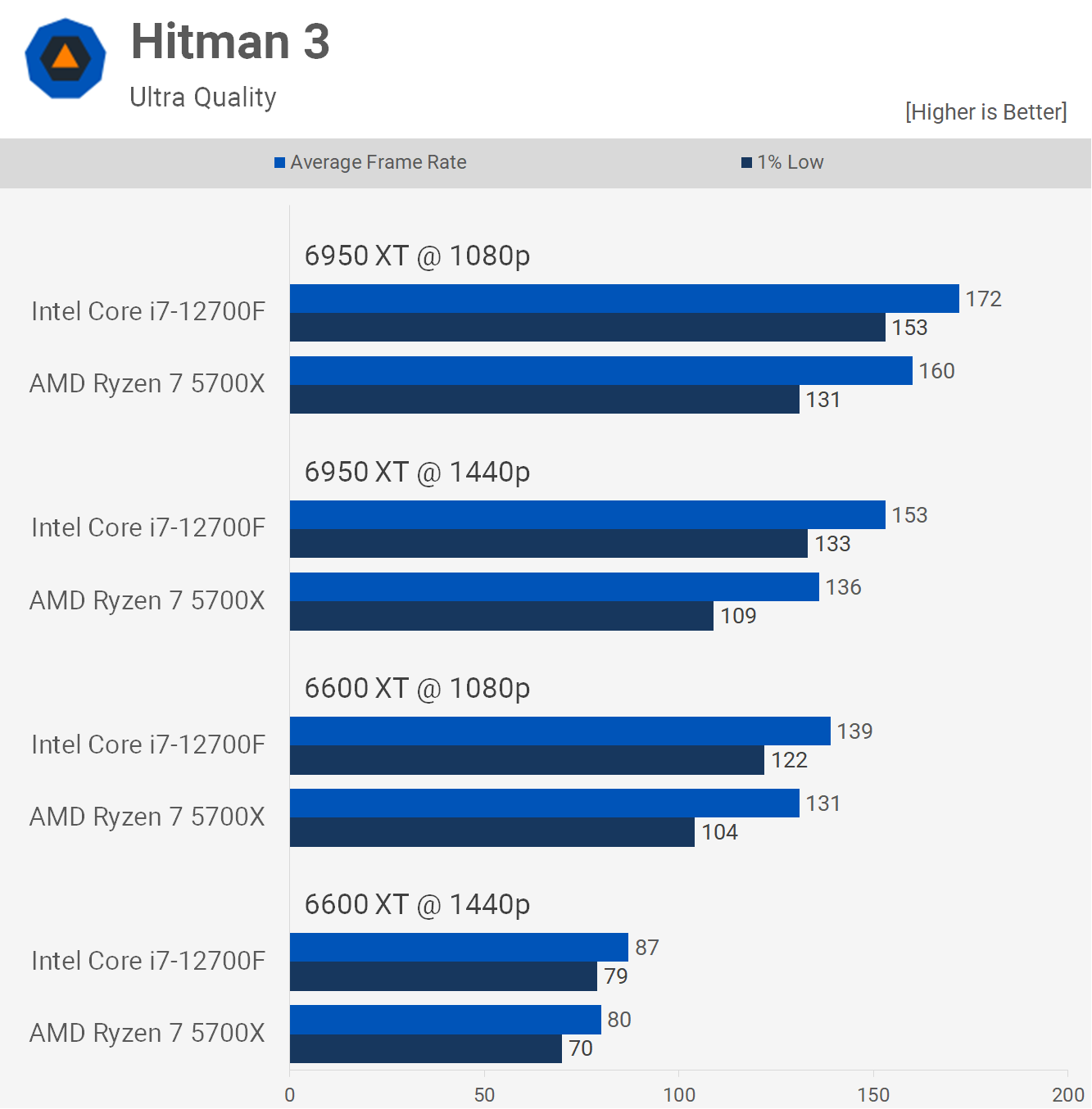
Hitman 3 is a CPU intensive game that utilizes these CPUs very well. Here the 12700F has a clear performance advantage, improving 1% lows by up to a 22% margin. Interestingly though, even with the much slower 6600 XT, the 12700F was up to 17% faster at 1080p, suggesting that there is some kind of overhead or latency issue with the Ryzen processor in this title.
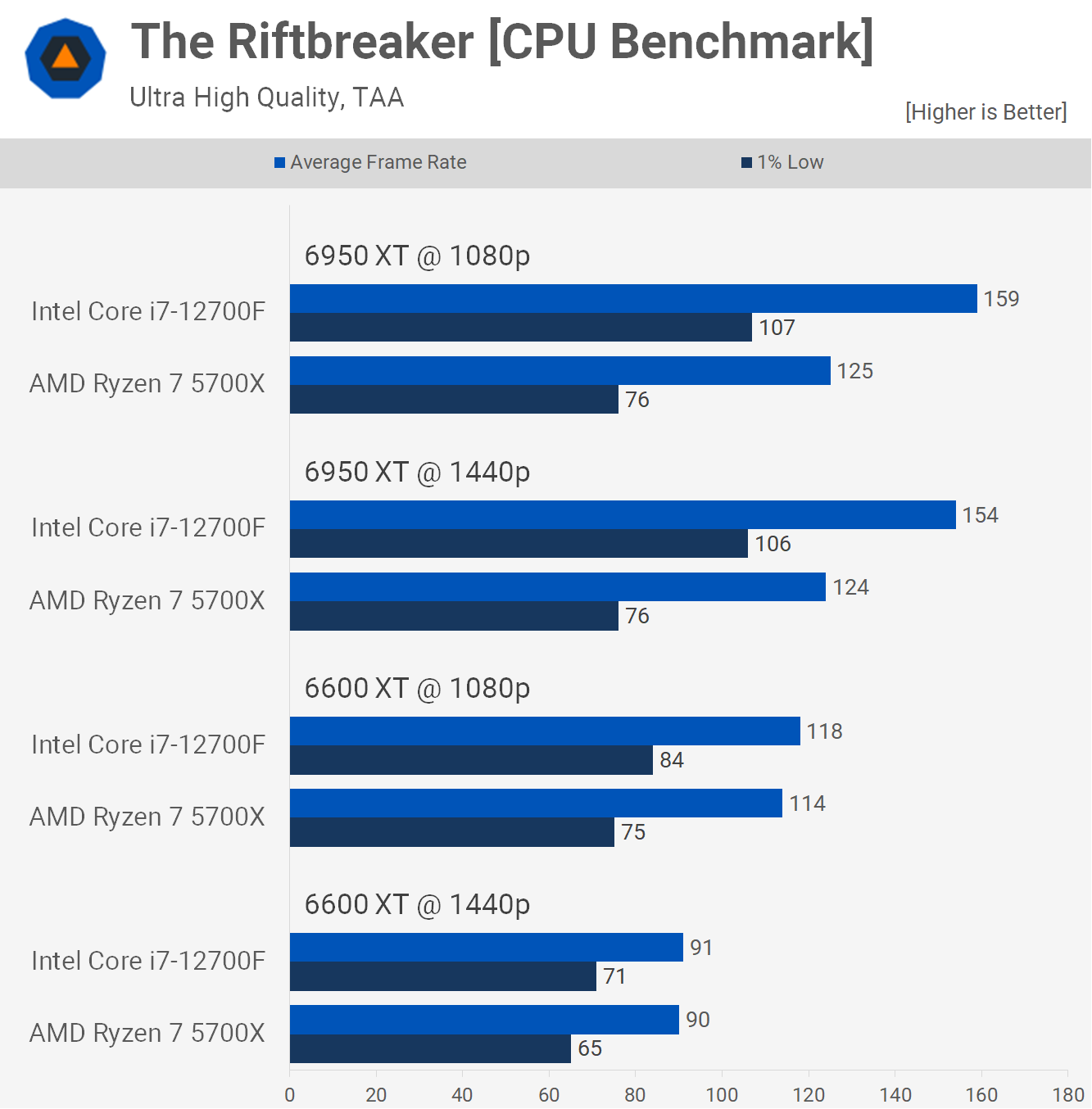
The Riftbreaker is another game that works better with Intel's Alder Lake architecture, boosting 1% lows with the 6950 XT at 1080p by as much as 41% while also increasing the average frame rate by 27%.
Those are some rather significant margins and it's not until we drop down to the 6600 XT that the margins close up, but even at 1080p the 12700F was still up to 12% faster.
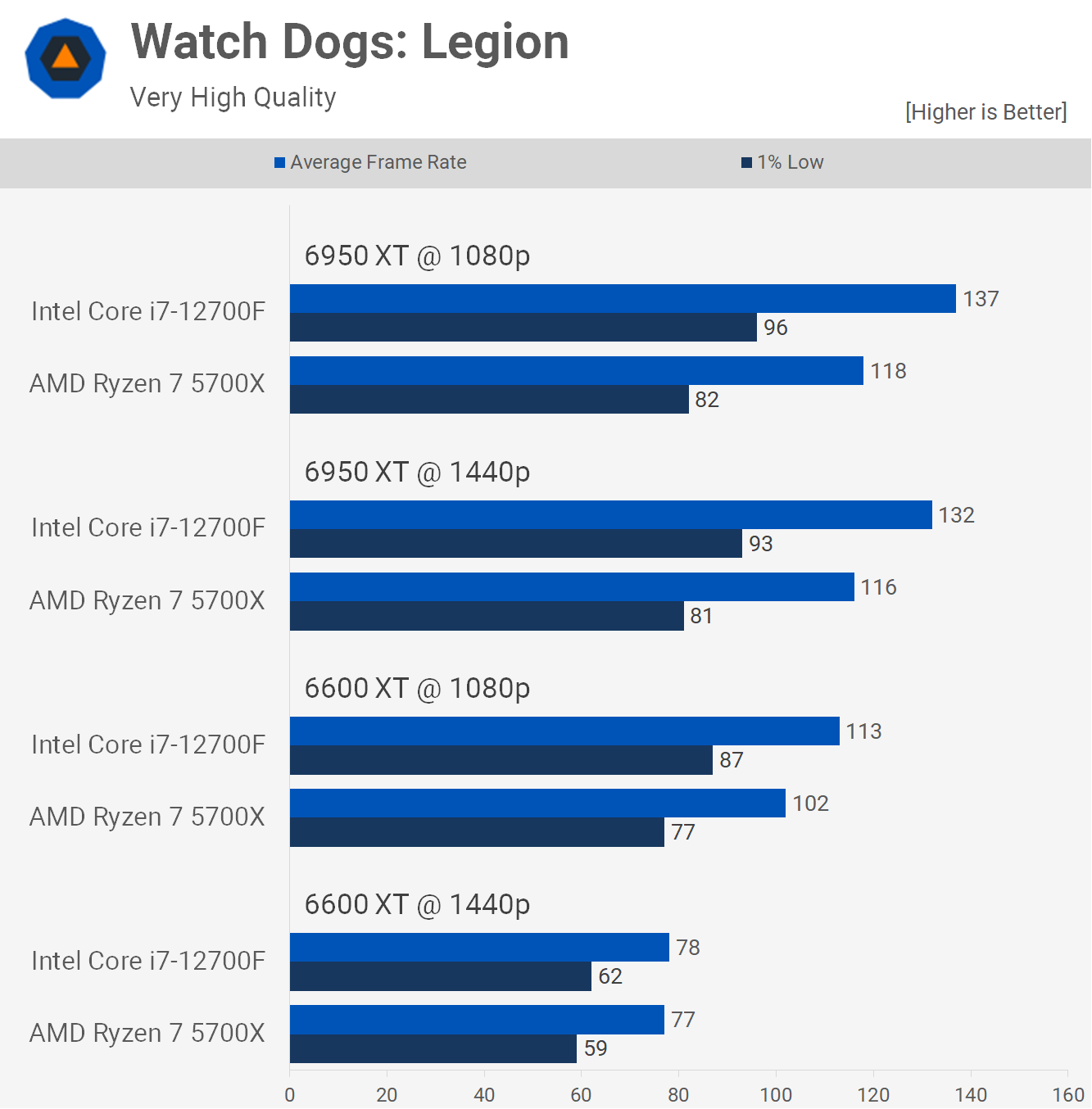
The last game that we're looking at individual results is Watch Dogs Legion, one of the most CPU and GPU demanding games we have for testing. The 12700F was 16-17% faster than the 5700X when testing with the 6950 XT at 1080p and the margins were similar even at 1440p. In fact, even when using the 6600 XT, the 12700F was up to 13% faster and it wasn't until we increased the resolution to 1440p that the gap was reduced to an insignificant margin.
23 Game Average
Across the all the games tested, the Core i7-12700F was on average 7% faster when looking at average FPS than the 5700X, while the 1% lows were improved by 10% when using the 6950 XT at 1080p. That's not a massive uplift, but still a favorable matchup for Intel. At 1440p those figures close up to 9% for the 1% lows, and just 4% for average frame rates.
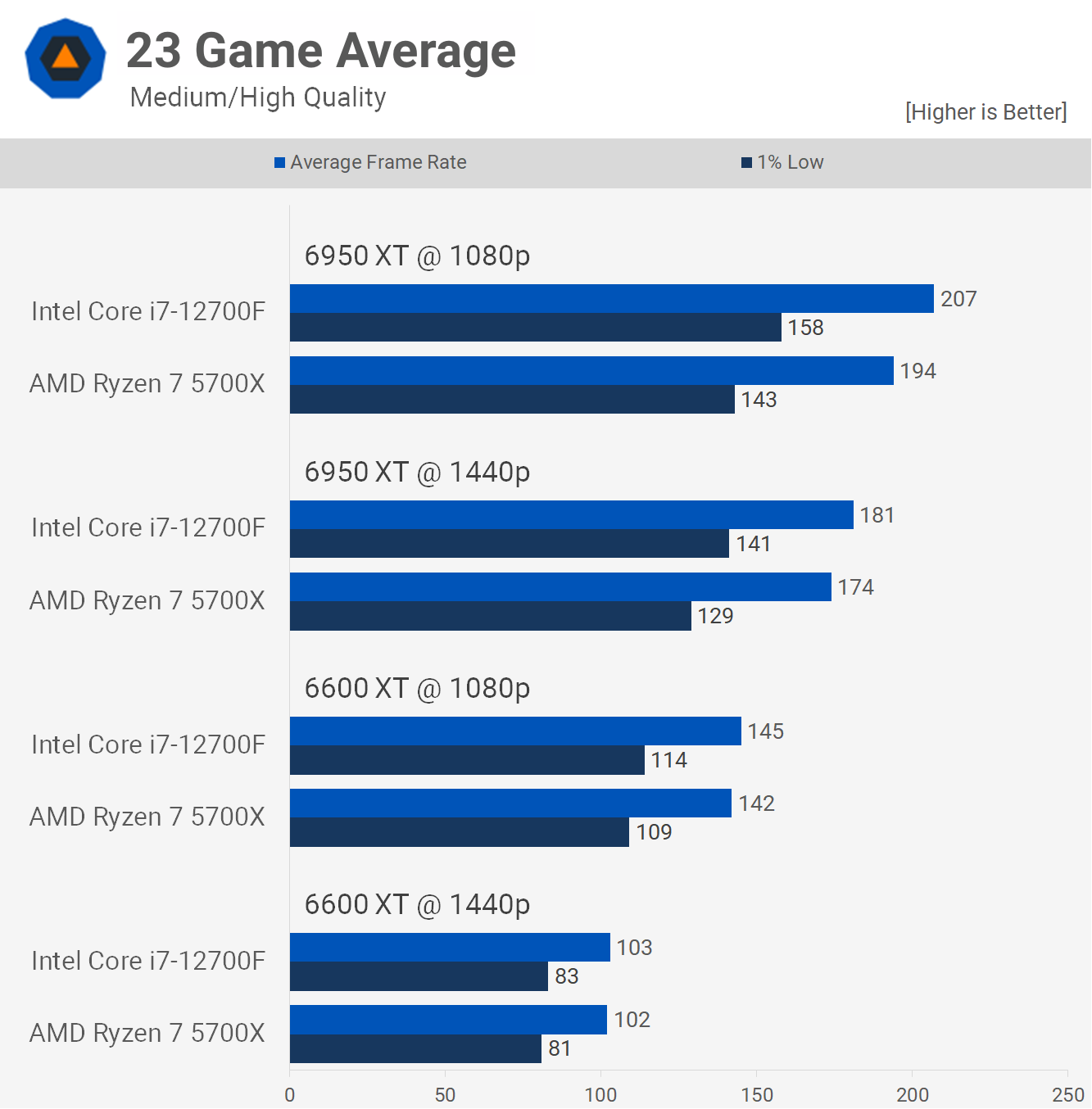
Meanwhile, those of you using more mid-range GPUs will see even less of a difference. For example, with the 6600 XT, the 12700F was on average just 5% faster for the 1% lows, and 2% for the average frame rate at 1080p. Then we see no real performance difference at 1440p despite average frame rates of just over 100 fps.
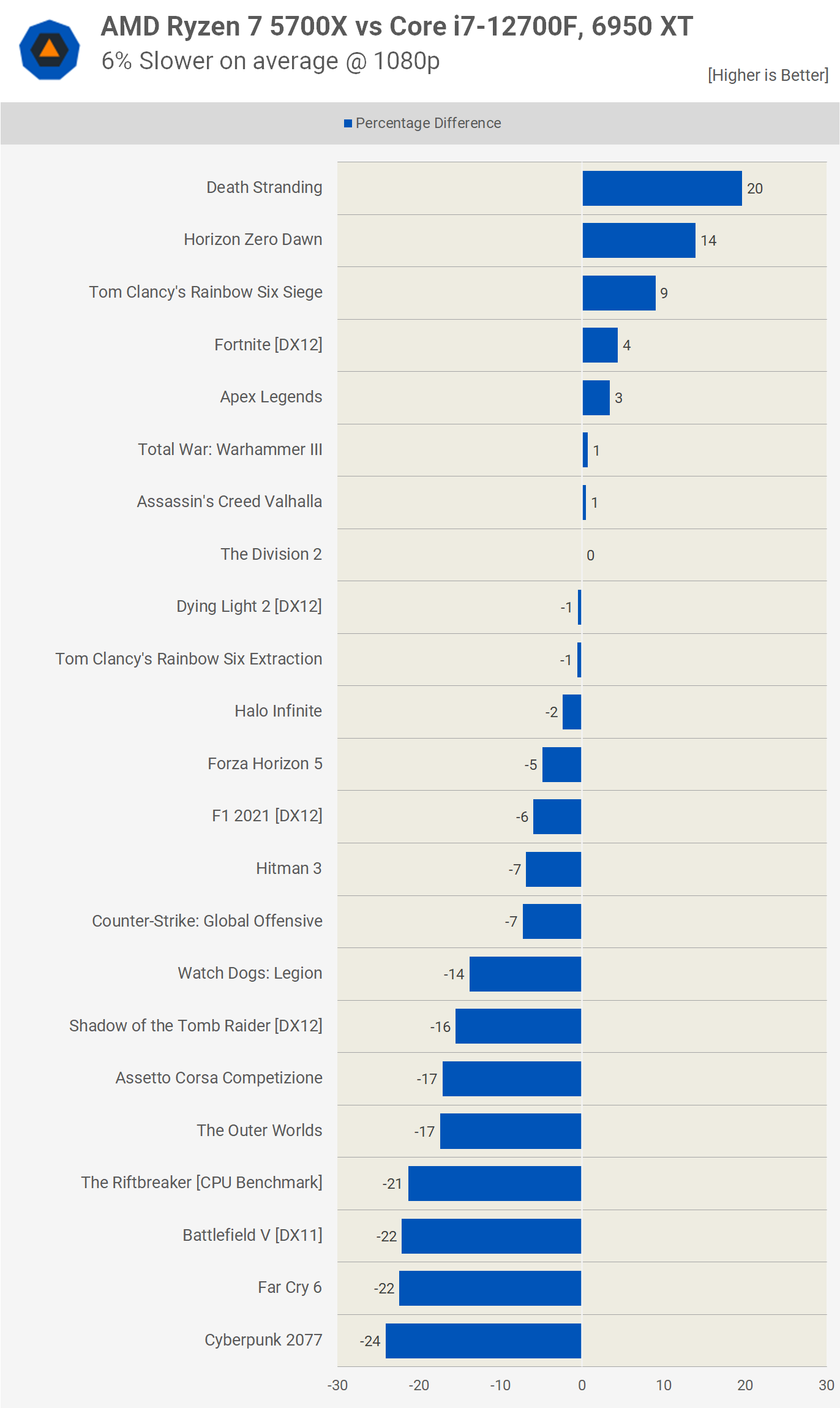
Looking at 1080p margins on a per game basis using the 6950 XT – the most CPU limited test results we have for this comparison – on average, the 5700X was 6% slower and although we see at least one game where it was up to 20% faster, there are four examples where it was slower by more than a 20% margin.
Only 9 of the 23 games tested saw a margin of 5% or less in either direction, meaning there were just 3 examples where the 5700X won by a meaningful margin, but 10 where it lost.
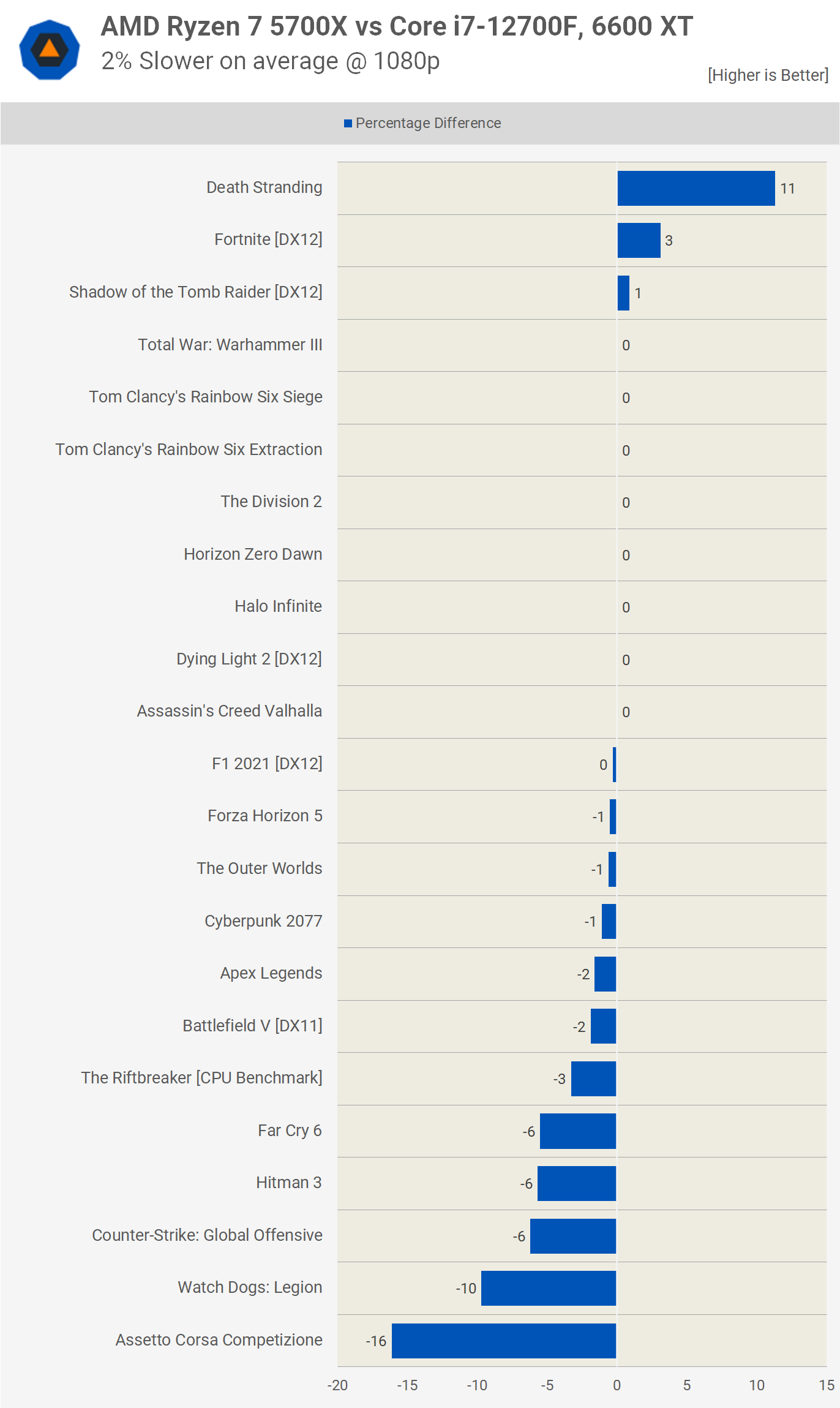
Using a less extreme GPU such as the 6600 XT greatly reduced the performance margins seen between these two CPUs and now even at 1080p the 5700X was just 2% slower on average.
Death Stranding is the only title to favor Ryzen by a meaningful margin, while Watch Dogs Legion and ACC were the only titles where it lost by a significant difference.
Best 8-Core CPU for Gamers
So which CPU is better? That depends on a few things... The obvious scenario to get out of the way is the upgrade path for those who already own a perfectly good AM4 motherboard. If you fall into that case, then the most cost effective option is to go with the 5700X by far.
Now, for new system builders the choice is far less obvious, so let's break down the costs. The 5700X is currently retailing for $285 and a decent B550 board such as the MSI B550M Pro-VDH WiFi costs an additional $100, so that's a $385 combo.
The 12700F costs $310 and the best budget B660 boards right now are the MSI Pro B660M-A and B660M Bazooka and both cost $140, so a $450 combo. For the motherboard and CPU you are looking at 15-20% premium when going Intel, though if you're building a $1,500 PC that's only a ~5% difference. Or if you're putting together something closer to $1,000 or more, it's less than a 10% price discrepancy on the total system.
In terms of gaming performance, which we just looked at, the 12700F is overall faster which does justify the price increase in our opinion. If you're not planning on upgrading in the near future then we think the Core i7-12700F is the better long-term investment as it's typically faster now, while the stronger single-core performance will see it fare better in future games.
If you were to change your mind down the track, you'll have the option of upgrading to a 13th-gen Raptor Lake CPU. We don't know yet if there will be any worthwhile options for a 12700F owner, so that's more of a maybe right now.
We're less drawn to the Ryzen 7 5700X for those who aren't already invested in AM4. It's certainly a great gaming CPU, but there's no real advantage that would see me pick it over the 12700F. Outside of gaming, the 12700F is also a much more powerful CPU as those four E-cores work wonders for core-heavy productivity workloads.
AMD fans might point to power consumption and operating temperatures, but the truth is the 12700F is every bit as easy to cool as the 5700X, and power consumption when gaming is virtually identical. Then when running core-heavy workloads, the 12700F and 5700X power usage isn't that different and the performance per watt ends up in favor of the Core i7.
Ultimately, you will be thoroughly pleased with either option, both are great gaming CPUs that tackle the latest and greatest games with ease and will continue to deliver high-end performance for many years to come.

